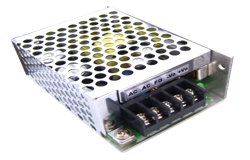About AC-DC Converter manufacturers
What is an AC-DC converter?
An AC-DC converter is a device that converts Alternating Current (AC) to Direct Current (DC). This is done by converting the AC signal into a DC signal with the same frequency, but with a higher amplitude. This is important for devices that need a stable, consistent supply of power.
The benefits of using an AC-DC converter
There are many benefits of using an AC-DC converter. Some of these benefits include:
1. Increased efficiency – An AC-DC converter can convert up to 98% of the AC input power to DC output power, compared to a typical AC adapter which only converts around 70-80% of the AC input power to DC output power.
2. Reduced heat generation – An AC-DC converter typically generates less heat than an AC adapter, which can help improve the overall efficiency of your system.
3. Smaller form factor – An AC-DC converter is often much smaller than an AC adapter, making it ideal for use in portable devices.
4. Higher power output – An AC-DC converter can provide up to 2.5A of output current, compared to a typical AC adapter which only provides up to 1.5A of output current.
If you are looking for a more efficient and portable way to power your devices, then an AC-DC converter is the perfect solution.







































